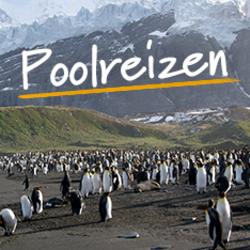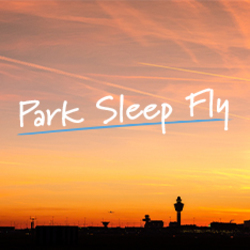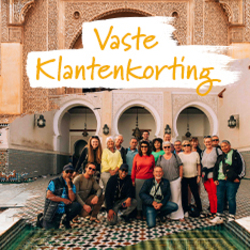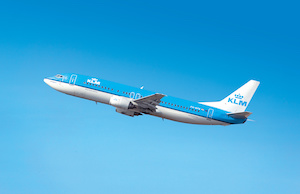Op reis in het najaar
BekijkActivities
- Culture
- Multi-Country Holidays
- Cultural Wonders
- Multi-Country Culture Holidays
- Discover Skopje and Sofia- two of the Balkan's most vibrant capitals. Bulgaria's UNESCO world heritage Rila Monastery. North Macedonia's Tikvesh wine region and alluring Lake Ohrid. Visit Prizren, Kosovo's culture capital. Natural beauty, ancient sites and traditional Balkan cuisine
Food
-
1
Start in Sofia, Bulgaria. After the meeting with the leader, we go for a welcoming dinner.
Our trip commences in the late evening at the hotel in Sofia, when after the main briefing you’ll have a chance to get to know the group and the leader over a meal.Note: Those travelers using the group flight will be picked up at the airport and transferred to the hotel.Hotel Sofia Palace or similar
-
2
Transfer to Melnik stopping at UNESCO sites Boyana Church and the famous Rila Monastery en route. Free afternoon upon arrival into Melnik.
After breakfast, we begin our transfer towards our second stop, the picturesque town of Melnik. En route we first visit the Boyana Church, a small mediaeval orthodox church listed as a world UNESCO cultural heritage site, located in a suburb of Sofia. Despite the church's small size, its frescoes are historically significant and part of an artistic achievement that started the technique illustrating biblical figures with emotions, and placing them alongside local aristocracy. The second UNESCO world heritage site we visit is perhaps the most famous in Bulgaria, the Rila Monastery (approximately 2 hour transfer from Sofia). The monastery is a must-see sight for anyone who visits the region and is regarded as one of Bulgaria's most important cultural, historical and architectural monuments. The combination of arcaded balconies, unique frescoes (the work of one of the most famous Bulgarian Revival Period artists), the gilded iconostasis, and the fabulous mountain views make a visit to this 10th Century monastery truly extraordinary. During our visit, your leader will be able to tell you its history and there will be plenty of time to explore with the option of lunch at one of the restaurants near the monastery complex. After lunch, we transfer to the small town of Melnik, the smallest Bulgarian settlement with a city status, known for its historic architecture. We have a quick visit to Kordopulova house, the biggest house from the Revival Period built in 1754 by the Kordopul family. Here we will become familiar with old Melnik traditions and architecture. The rest of the day is free to explore Melnik.Hotel Melnik or similar
-
3
Transfer to North Macedonia. After lunch we visit the ancient city of Stobi and enjoy wine tasting over dinner in a winery of the famous Tikveš wine region.
This morning, after breakfast, before we depart for North Macedonia, we’ll have a visit to Kordopulova house, the largest house from the Bulgarian Revival Period, built in 1754 by the Kordopulos family. Here we will become familiar with old Melnik traditions and architecture.Then we bid farewell to Bulgaria and head to North Macedonia and the area of Strumica, in the southeastern region of the country. After 1,5hrs our first stop will be the carnival city of Strumica where we’ll stretch our legs, as we go on a short walk around the centre. In Strumica we’ll have our first encounter with the North Macedonian cuisine over a lunch in a nice restaurant. In the afternoon, we move to the famous Tikveš wine region. Here, we will visit the spacious archaeological site of Stobi, the largest one in North Macedonia. The ancient city of Stobi was mentioned for the first time in 197 B.C, but its history starts some 5 centuries earlier, developing from a Paeonian town to the capital of the Roman province Macedonia Salutaris. The preserved buildings include a large theatre, luxurious palaces with fountains, peristyles and mosaics (worked in soft green, deep blue, ochre and reddish tones), Roman thermae, ancient temples and the oldest Christian church in the country.In the late afternoon, we check in at our hotel-winery, located in an area full with vineyards, outside Demir Kapija and spend an evening tasting a selection of premium North Macedonian wines over dinner. North Macedonian wines have taken a central role in society since the ancient times, when the kings and emperors favored its grapes. Thanks to an abundance of sunshine, Mediterranean and Continental breezes and rich soil, the grapes thrive in North Macedonia.Hotel Popova Kula or similar
-
4
Drive to Bitola to visit the archaeological site of Heraclea and enjoy a walking tour of the city with free time in the evening.
After a relaxed breakfast, surrounded with vineyards, we head towards the city of Bitola (2hrs drive).Our first stop is the ancient city – now an archaeological site of Heraclea Lyncestis, located on the outskirts of Bitola where we have a tour of Bitola’s predecessor. Heraclea was founded by King Philip II of Macedon in the 4th century BC after he had incorporated the surrounding region of Lyncestis into his kingdom of Macedon. The city was named in honor of the mythological hero Heracles, whom Philip considered his ancestor. With its strategic location, it became a prosperous city. Each object, each stone, each pedestal is shrouded in mystery from the mists of 10 centuries of its existence.In the afternoon we do a sightseeing of Bitola, the second largest city of North Macedonia. Historically it was a major political, economic and cultural centre of the Balkans in 19th and early 20th century. Many foreign countries had their consulates in Bitola, therefore it is also known as the 'City of Consuls. After a lunch in a local restaurant, your leader will take you on a walk in the centre of Bitola, showing you the landmarks, including the famous Širok Sokak Street, the Clock tower, Ottoman mosques, Christian churches and the Old Bazaar’s paved streets.After checking in to your hotel, in your free time, you may wish to visit the rewarding National museum, walk the promenade in the near-by park, or enjoy a coffee in one of the many cafes and learn about the coffee culture of Bitola and the significance it has had on this city over the ages.Hotel Teater or similar
-
5
Pelister NP walk, Beekeepers farm and lunch in Dihovo, transfer to Lake Ohrid via Lake Prespa and Galičica NP.
This is a day to enjoy the nature. In the morning we go to Pelister National Park, in Bitola’s vicinity, to walk “The Path of the First World War” through forests of Molika pines and to learn about the history of the area during WW1. Given that Bitola was on the front-line of the Macedonian front during the Great War, it witnessed the times of madness, and remnants of the war can still be found in the surrounding mountainsThen we go to the nearby village Dihovo, where we have the opportunity to explore the fascinating world of the Macedonian honey bee (Apis mellifera macedonica) as we join one of the local beekeepers. During the demonstration, protective clothing will be provided and there will be a chance to taste honey from the comb as well as an opportunity to purchase some if you wish to. The lunch is arranged in the garden of a local family home in the village.In the afternoon we continue to Ohrid, enjoying a ride via Galičica National Park. We’ll stop at Lake Prespa and enjoy the tranquility of this Ramsar Wetland, before we start driving the scenic road through Galičica Mountain with short en route stops to enjoy the fascinating landscapes of both Ohrid and Prespa lakes. Driving along the coast of UNESCO listed Lake Ohrid, valued as a world heritage since 1979, we’ll reach the city of Ohrid, where you’ll have free time upon arrival.Hotel Royal View or similar
-
6
A full day in Ohrid, a UNESCO World Heritage city. Dinner in a family home in Kuratica village.
This morning, after breakfast, we do a walking tour of some of the famous sites in Ohrid, the pearl of the Balkan Peninsula. Built on a large hill above the lake, the Old town is one of the oldest human settlements in Europe with traces of its 3 millennia of existence visible everywhere. Overlooking the blue waters of the unique lake, Ohrids’s artistic and historical importance is maybe most apparent through its vast collections of Byzantine and Post-Byzantine Icons and fresco paintings and by being the site of the oldest Pan-Slavic university, founded by Saint Clement, the patron saint of the city in the 9th century. Ohrid region is one of few only in Europe which are listed as UNESCO World Heritage by both Natural and Cultural criteria.The sightseeing will take us through the winding, cobbled stone streets, with traditional houses and many Byzantine style churches, including Hagia Sophia cathedral, the Holy Virgin Peribleptos and St. John at Kaneo. We will see the Upper Gate, visit the Tsar Samuel's Fortress and the Ancient Theatre. Ohrid boasts with preserved handicrafts, precious jewelry, traditional restaurants, lakeside cafes and historic monuments which all contribute to the charming atmosphere. You will have a free afternoon to explore, visit some of the museums, enjoy a panoramic boat ride, or maybe take a swim in the lake.In the evening we will check out the vicinity of Ohrid by having a dinner in Kuratica village (approximately 30 mins away), where a local family will prepare a delicious, home cooked meal in their family home, using organic local products.Hotel Royal View or similar
-
7
Transfer to Kosovo via Tetovo and Šar Planina NP. Lunch in Varvara and a walking tour in Prizren.
After breakfast, we check out from the hotel and travel from Ohrid to Prizren in Kosovo. We make a stop in Tetovo (approx. 2hrs drive), to see the Colorful Mosque, one of the most notable Islamic monuments in Europe, due to its unique decorative style. From here we head to the nearby village of Varvara, where the local village community will prepare a traditional lunch on their beautiful terrace overlooking the Polog valley.Then we continue to Kosovo, where after the border we’ll have a scenic drive (two more hours) through Šar Planina National Park in order to reach Prizren, a historical and vital city, surrounded by incredible nature. This mediaeval capital is known for traditional handicrafts, its gastronomy and wines, and a wonderful mix of Serbian and Ottoman monuments. The leader will take us for a walk around the city to see the most famous sites, including Shadirvan square, Sinan Pasha Mosque, the Orthodox and the Catholic Cathedrals, Gazi Mehmet Pasha’s Hammam and the 14th century Our Lady of Ljeviš (part of a World heritage property).The evening is at your disposal to enjoy a meal or the sunset view from Kalaja - the Fortress of Prizren.Hotel Classic or similar
-
8
Visiting the UNESCO’s Gračanica Monastery before arrival to Skopje, the capital of North Macedonia, followed by a walking tour of the city.
We leave Prizren in the morning. Our first stop is King Milutin’s final endowment, Gračanica Monastery, a UNESCO World Heritage site, located in the eponymous village, in the heart of Kosovo, close to Priština, the capital of this disputed territory. The masterfully built monastic church was finished and fresco decorated by 1321 and still is a bastion of Orthodox Christianity, since Gračanica is one of the few remaining dominantly Serbian populated areas in Kosovo.Then we head back across the border to Skopje, the North Macedonian capital. We arrive in Skopje after approx. 2hrs drive and in the late afternoon we have a sightseeing tour Skopje’s downtown. Skopje valley has been continuously inhabited since Neolithic times and the city has experienced Roman, Byzantine, Slavic and Ottoman rule through the ages. Today it is a bustling and modern metropolis thanks to the redevelopment after the catastrophic 1963 earthquake. The mixture of various period sites and architecture styles makes it sometimes surreal, however, if you delve beneath the surface you will discover a city with a complex history and fascinating sights. Some of them are the Stone Bridge, Macedonia square and street, Mother Theresa memorial house, the Old Railway Station, Stara Čaršija quarter (the Old Bazaar) – containing numerous buildings from the Ottoman period and Skopsko Kale - the mediaeval Fortress.Bushi Resort or similar
-
9
Osogovo monastery visit while transferring back to Sofia for a city tour and a farewell dinner.
Today’s drive is dedicated to completing the circle back to Sofia. We’ll break this long drive (4hrs approximately) with a stop before the border at Osogovo monastery near Kriva Palanka, to visit this historical place in fascinating settings and to have a lunch.We return to Sofia in the late afternoon. There will be a walking sightseeing tour (approx. 2 hours) of some of the main sights of the Bulgarian capital. Nestled under Vitosha Mountain, Sofia is a laid back city with an eclectic mix of sites, reflecting its 2000 years of history and various Roman, Byzantine and Ottoman influence. Capital of Bulgaria since 1879, today it is known for its diverse landmarks, communist architecture, orthodox churches, manicured gardens and vast boulevards.The walking tour will include central Sofia's notability, like Sveta Nedelya Square, Independence Square with the St. Sofia monument, excavated Roman ruins of the ancient Serdica, the Council of Ministers and the former House of the Communist Party, Rotunda of St.George, the National theatre, the Russian orthodox church, Alexander Nevsky Cathedral, the Bulgarian Parliament and the monument to the Tsar Liberator.In the evening it’s time to have a farewell dinner at a local restaurant where traditional dishes of Sofia are served.Sofia Place Hotel or similar
-
10
End Sofia.
In the morning you have free time to walk around Sofia and say goodbye. The group flight passengers will be taken to the airport in time for their early afternoon flight.












































